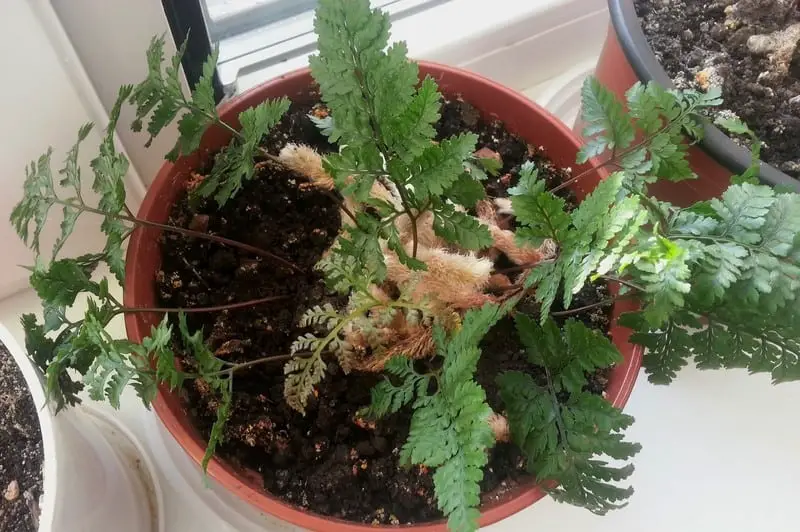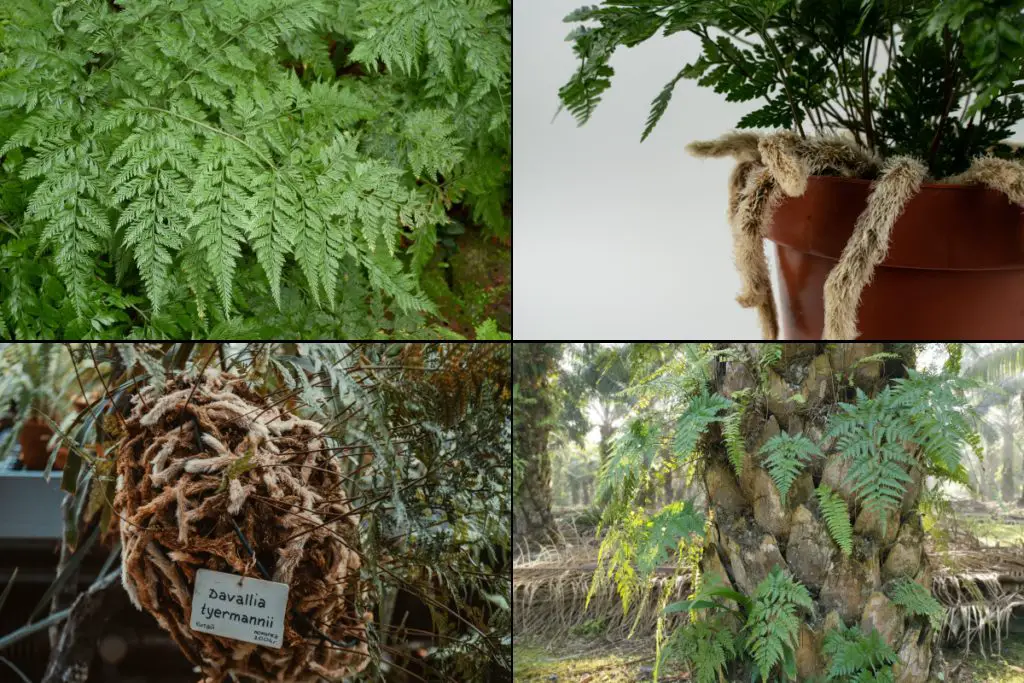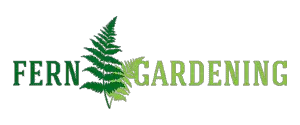The Rabbit’s foot fern, Davallia solida (var. fejeensis), is a beautiful tropical fern with delicate, complex fronds that form a low-growing bush of glossy green foliage. The fern gets its name from the distinctive furry rhizomes that grow from the crown of the fern over the surface of the soil, and often trail over the sides of its pot.

It is a popular house plant, non-toxic for animals and children, and easy to maintain and propagate. Here is all you need to know to succeed in cultivating the Rabbit’s foot fern at home.
Common names
- Rabbit’s foot fern
- Rabbit foot fern
Botanical names
- Davallia solida (var. fejeensis)
- Davallia fejeensis
- Davallia fijiensis
Growth habit
Rabbit’s foot ferns are evergreen and grow with a crown forming habit. Some fronds may brown and die back during winter, but can be trimmed off ready for new growth in the spring.
The ferns send out hairy rhizomes from the crown that can form new roots if they anchor to soil and project new fronds upwards as fiddleheads.
As houseplants, specimens will reach a typical height and spread of around half a meter, but can grow up to one meter in a hanging basket or directly planted in the yard.
Hardiness
Davallia fejeensis originates from Fiji, and requires tropical conditions for survival. It can only be realistically grown outdoors in Hardiness zone 11 or higher (minimum annual temperature around 50 °F or 10 °C). Plants in pots can be taken outside in spring or summer if these temperatures are maintained.
Sun exposure
Grow in indirect sunlight or partial shade. Avoid direct sun, which will cause scorching and damage to leaves. Artificial light can be moderate or bright.
Watering
Rabbit’s foot ferns should be watered once a week as a starting guide, but soil should be checked to establish whether this is sufficient for the local humidity. Soil should be moist to the touch, but not wet. Rabbit’s foot can tolerate occasional dry spells better than many fern varieties, but may lose some fronds to browning. These will recover. In winter, it is fine to allow the top centimeter or two of soil to occasionally dry as this encourages the rhizomes to retain water.
Rabbit’s foot ferns particularly appreciate misting, as the rhizomes lie on the surface of the soil and so can absorb water from humid air. Local humidity can be increased with a humidifier, or by placing the pot on a pebble tray.
Soil
A standard multipurpose potting mix is fine, as long as there is sufficient coarse material to aid drainage. The soil should be acid or neutral pH. Plants should be repotted every two to three years, especially if the roots are becoming crowded and pot bound.
Propagation
Rabbit’s foot ferns can be easily propagated by cutting sections from their characteristic hairy rhizomes.
In spring, the rhizomes should be cut at the level of the pot rim, and sectioned into segments of at least 5 cm. Successful propagation is more likely if these segments already have signs of emerging fronds or fiddleheads and roots.
Lay the segment in standard potting mix with the pot filled to three quarters of its depth. Bury the rhizome and top up the remaining quarter of the pot with more mix. Water thoroughly, and make sure the soil drains well so the rhizome segment does not become soaked and at risk of rotting.
Do not water too frequently, as the rhizomes retain plenty of moisture.
The ferns can also be propagated from spores.
Varieties and cultivars
The Davallia genus has nearly forty closely related species that are in appearance similar to Rabbit’s foot ferns. Other varieties include the Hare’s foot or deersfoot fern (Davallia canariensis), and the Squirrel’s foot fern (Davallia mariesii). The Black Rabbit’s foot fern (Davallia trichomanoides). These species are native to the pacific islands, but some also grow more widely in tropical and subtropical conditions.
All share the characteristic hairy rhizomes, which also enables some of the species to grow as epiphytes (“air plants” that cling to other surfaces) as well as terrestrial plants.

Davallia species ferns such as the Rabbit’s foot make excellent and eye catching houseplants.
